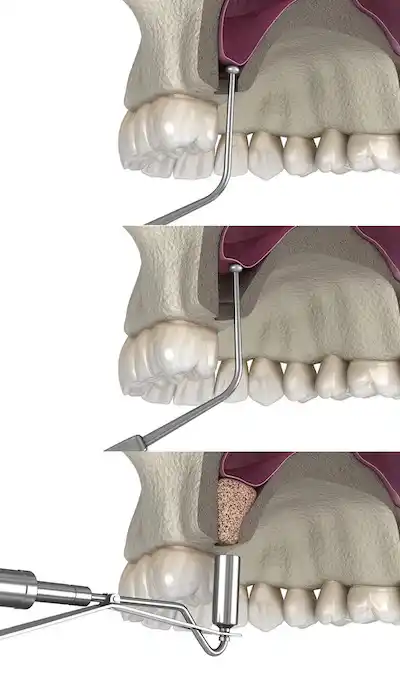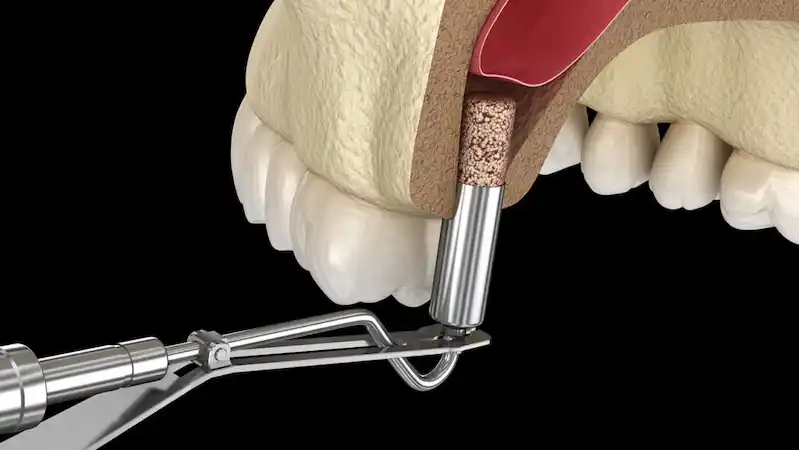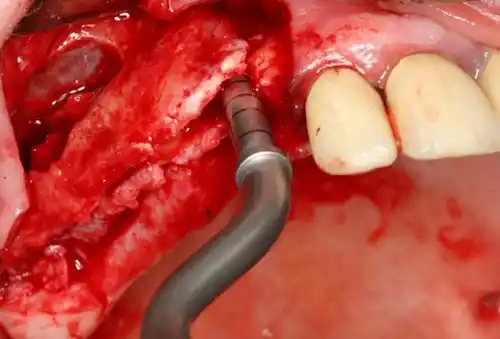Dental implants have become a popular and highly effective solution for replacing missing teeth. However, when it comes to the upper jaw, there can be unique challenges due to the proximity of the sinus cavity.
In cases where there is insufficient bone height in the upper jaw, implant placement may require an additional procedure called a sinus lift surgery. In this comprehensive article, we will explore the relationship between dental implants and sinus lift surgery, understanding the need for this procedure, the process involved, and the benefits it offers for successful implant placement in the upper jaw.
-
The Importance of Sufficient Bone for Dental Implant Success
Before discussing sinus lift surgery, it is essential to understand why adequate bone volume is crucial for the success of dental implants. Dental implants require a solid foundation for osseointegration, the process in which the implant fuses with the surrounding bone. Insufficient bone height in the upper jaw can pose challenges for proper implant placement and integration, increasing the risk of implant failure. In such cases, a sinus lift surgery becomes a viable solution.
-
Understanding Sinus Lift Surgery
A sinus lift surgery, also known as a sinus augmentation, is a procedure that adds bone to the upper jaw in the area of the premolars and molars. This surgery aims to increase the height and volume of the available bone, creating a stable environment for successful implant placement. The procedure involves accessing the sinus cavity above the upper jaw and carefully lifting the sinus membrane to make space for the bone grafting material.
-
The Need for Sinus Lift Surgery
Sinus lift surgery becomes necessary in situations where the natural bone height in the upper jaw is insufficient to accommodate dental implants. Several factors can contribute to this, including:
a. Tooth Loss and Bone Resorption
When teeth are lost in the upper jaw, the bone that once supported them can gradually diminish in height and width. This resorption process can result in inadequate bone volume for implant placement.
b. Anatomy and Sinus Position
The sinus cavity in the upper jaw can naturally be positioned closer to the jawbone, leaving limited space for implant placement. In such cases, a sinus lift surgery is needed to create a more favorable environment for successful implant integration.
-
The Sinus Lift Surgery Procedure
The sinus lift surgery is typically performed by an experienced oral surgeon or a periodontist. Here are the general steps involved in the procedure:
a. Evaluation and Treatment Planning
Your dentist will conduct a thorough examination, including X-rays or 3D imaging, to assess the bone height and determine if a sinus lift is necessary. A customized treatment plan will be created based on your specific needs.
b. Anesthesia and Incision
The surgery is performed under local anesthesia, ensuring your comfort throughout the procedure. An incision is made in the gum tissue to expose the underlying bone.
c. Sinus Membrane Elevation
A small window is created in the bone to access the sinus cavity. The sinus membrane is gently lifted, and the space beneath it is filled with bone grafting material. This material can be obtained from your own body (autogenous graft), a donor source (allograft), or synthetic substitutes.
d. Closure and Healing
Once the bone graft is in place, the incision is sutured, and the healing process begins. Over time, the graft will integrate with the existing bone, creating a stable foundation for implant placement.

-
Healing and Implant Placement
After the sinus lift surgery, a healing period of several months is usually necessary to allow the bone graft to fully integrate and create a solid base. Your dentist will closely monitor the healing progress during follow-up appointments. Once the bone has healed, dental implants can be placed in the augmented area, providing a secure and long-lasting solution for missing teeth in the upper jaw.
-
Benefits of Sinus Lift Surgery
Sinus lift surgery offers several benefits for implant placement in the upper jaw:
a. Increased Bone Volume
By adding bone grafting material, the sinus lift procedure enhances bone height and volume, providing sufficient support for dental implants.
b. Successful Implant Integration
The additional bone promotes osseointegration, allowing the implants to fuse with the surrounding bone more effectively.
c. Improved Aesthetics and Function
Dental implants placed in the upper jaw following a sinus lift surgery can restore natural tooth appearance and functionality, allowing you to chew, speak, and smile with confidence.
d. Enhanced Quality of Life
Dental implants offer long-term benefits, improving oral health, overall well-being, and self-esteem. Sinus lift surgery enables successful implant placement in the upper jaw, ensuring you can enjoy these benefits to the fullest extent.
The Takeaway
When it comes to dental implants in the upper jaw, sinus lift surgery plays a crucial role in providing a solid foundation for successful implant placement. By addressing inadequate bone height and volume, sinus lift surgery enhances the chances of long-term implant success and restores the aesthetics and functionality of missing teeth.
If you are considering dental implants in the upper jaw and have concerns about bone volume, consult with a qualified implant dentist who can assess your specific needs and determine if a sinus lift surgery is necessary.
With advancements in modern dentistry, the combination of dental implants and sinus lift surgery can help you achieve a confident smile and enjoy the numerous benefits of a complete and functional set of teeth.





